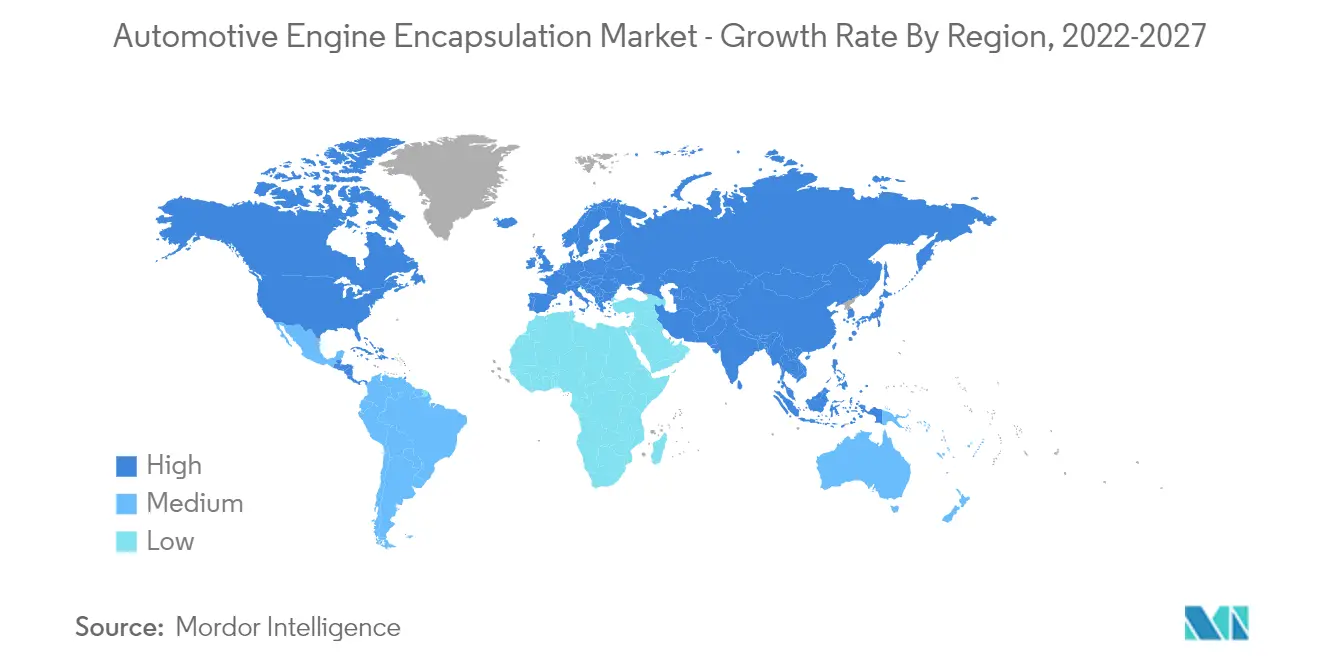Market Trends of Automotive Engine Encapsulation Industry
This section covers the major market trends shaping the Automotive Engine Encapsulation Market according to our research experts:
Stringent Government Regulations to Drive Market Growth
The growing requirement for thermal management in cars operating at high speeds has been a primary driver for the automotive engine encapsulation market, which is likely to continue to grow. The increased focus of automakers and governments in several countries on improving vehicle engine efficiency has led to downsizing engines and under-the-hood vehicle parts, as well as increased research and development in this field for improved part packaging efficiency and managing engine thermals, resulting in increased demand for engine encapsulation.
Because of the high demand for efficient engines in mileage-sensitive markets in many developing countries, automakers are introducing higher pressure for combustion engines, which can also help with fuel consumption reduction, necessitating the use of high-efficiency engine thermal management systems.
The US Federal Government mandated in March 2020 that between 2021 and 2026, automotive fuel consumption and emissions be reduced by 1.5% every year. According to the US Department of Energy (DOE), lowering vehicle weight by 10% results in a 6-8% boost in fuel economy. As a result, companies have started to encapsulate engines with materials such as carbon fiber and glass fiber composites.
The automotive manufacturing industry must follow certain norms in regards to environmentally friendly recycling and dismantling of vehicles, higher fuel efficiency standards, and increased use of recyclable materials in vehicles, according to European directives and standards (2000/53/EC-End Life of Vehicles) and the US Department of Transportation, which is expected to offer high potential for composites engine encapsulations.

Asia-Pacific Dominates the Automotive Encapsulation Market
Chinese automotive exports are heavily influenced by the global economy and environmental regulations. The COVID-19 pandemic has had a marginal impact on the export of vehicles from China. For the last few years, China has been the world's largest car-producing country.
For the full year 2021, auto sales grew for the first time since 2017. Auto sales rose 3.8% from a year earlier to 26.28 million units. Chinese car brands enjoy a significant cost advantage over imported cars from international automobile manufacturers in other car markets. Thus, other developing countries and emerging markets are the main export destinations for Chinese car manufacturers.
The use of carbon fiber, which is lightweight and resistant to high temperatures, is predicted to grow rapidly in the Asia-Pacific market over the forecast period. The engine encapsulation in most sports cars and high-end automobiles is constructed of carbon fiber. China is the world's third-largest producer of carbon fiber, accounting for 12% of global output.
As most mid and premium passenger vehicles in Asia-Pacific are equipped with body mounted encapsulation, the category is expected to account for a significant portion of the automotive engine encapsulation market. As the region's middle-class population grows, so will automotive sales, and Asia-Pacific is expected to be a prominent market during the forecast period.


